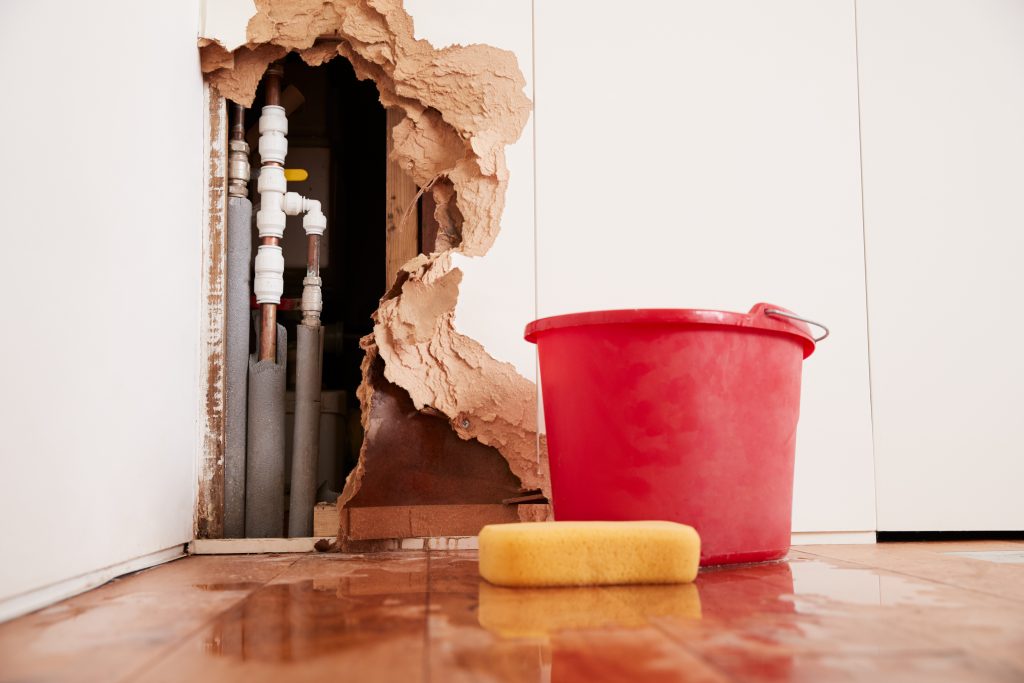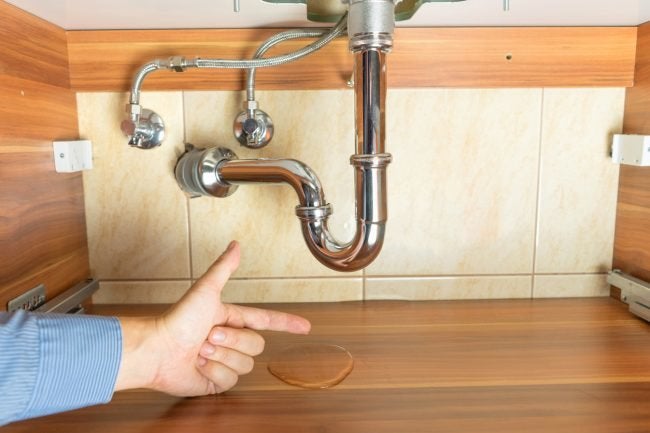6 Ways to Locate Hidden Water Leaks in Your House
6 Ways to Locate Hidden Water Leaks in Your House
Blog Article
Just about every person is bound to have his or her own idea with regards to Detecting hidden plumbing leaks.

Early discovery of leaking water lines can reduce a prospective calamity. Some tiny water leaks may not be visible.
1. Take A Look At the Water Meter
Checking it is a proven method that helps you discover leakages. If it relocates, that suggests a fast-moving leakage. This suggests you might have a sluggish leak that could even be below ground.
2. Examine Water Usage
If you spot abrupt modifications, regardless of your usage being the same, it means that you have leakages in your plumbing system. A sudden spike in your expense shows a fast-moving leak.
A constant boost every month, also with the same behaviors, reveals you have a slow leakage that's also slowly rising. Call a plumber to thoroughly examine your home, particularly if you really feel a warm area on your floor with piping beneath.
3. Do a Food Coloring Examination
30% comes from bathrooms when it comes to water intake. Test to see if they are running correctly. Decline flecks of food shade in the tank and wait 10 minutes. If the shade in some way infiltrates your bowl during that time without flushing, there's a leak in between the container and bowl.
4. Asses Outside Lines
Do not neglect to examine your outdoor water lines too. Test spigots by connecting a garden hose pipe. Must water seep out of the connection, you have a loose rubber gasket. Replace this as well as make sure all links are limited. It will assist get it professionally analyzed and maintained annually if you have actually obtained a sprinkler system. One small leak can throw away lots of water as well as surge your water bill.
5. Examine the circumstance and evaluate
Home owners must make it a practice to inspect under the sink counters and even inside cupboards for any kind of bad odor or mold development. These 2 warnings indicate a leakage so punctual interest is called for. Doing regular evaluations, also bi-annually, can conserve you from a major issue.
Much more importantly, if you understand your home is currently old, keep a watchful eye on your heating systems, hose pipes, pipelines etc. Check for stainings and deteriorating as many pipelines and home appliances have a life expectancy. They will certainly also naturally wear away as a result of tear and also wear. Do not wait for it to intensify if you believe leaking water lines in your plumbing system. Call an expert plumber today so you don't end up with an awful mess in your house.
Early discovery of dripping water lines can mitigate a prospective catastrophe. Some small water leakages might not be noticeable. Examining it is a surefire way that helps you uncover leakages. One little leakage can waste lots of water as well as surge your water expense.
If you presume leaking water lines in your plumbing system, don't wait for it to escalate.
How to Know If Your Home Has a Hidden Leak
Water Meter Reveals Inexplicable Water Usage
If you’d like to test whether or not there’s a leak somewhere in your home, you can do this using your water meter. Here is how to conduct the test:
Don’t use any water in your home for at least 30 minutes; this also means not turning on faucets or water-using appliances.
Go outside, and check your water meter for activity.
If your water meter shows that there was activity, even though no one was using any water, this proves that there is a leak in your home.Visible Mold or Mildew Growth
Leaks behind walls create moist, dark environments that allow mold and mildew to grow and thrive. Eventually, you might see mold growth forming on the wall closest to a hidden leak.
If mold is growing in an area that receives a high amount of moisture, such as a bathroom, it may simply be an indication that better ventilation is needed. However, if you see mold growth on a wall or the ceiling in an area where you would not expect, you probably have a hidden leak.
Musty, Mildew Odor
Sometimes you might not be able to see the mold or mildew that is growing as a result of a leak. However, the smell can give the problem away just as easily. If you catch a whiff of something musty, there’s a good chance that old water is collecting somewhere in your home that you can’t see.
Stained/Warped Walls, Ceilings, or Floors
When your home soaks up water, a variety of red flags can become visible, including ceiling stains, bubbling drywall, warped walls, and sagging floors. While these issues can be caused by excess humidity, they can also be signs that a pipe or plumbing connection has started leaking behind your walls.
Inexplicably High Water Bill
After a while, you get a general sense for what your water bill should be. If you own a pool or sprinkler system, your bill will tend to be higher during summer. However, if you receive a water bill that seems especially high, and you can’t figure out what caused it, then you may have a hidden leak somewhere that’s increasing your bill.
https://www.plumbingjoint.com/blog/2019/july/how-to-know-if-your-home-has-a-hidden-leak/

Do you like reading up on Top leak detection hacks? Post a remark down the page. We will be delighted to see your responses about this blog. In hopes that you visit us again soon. If you liked our post please don't forget to pass it around. I thank you for reading our article about Detecting hidden plumbing leaks.
Report this page